Transatlantic Operating Model
promoting growth through increased collaboration and best practices
6%
sales growth in Europe
Beth Roche, a 60-year-old Indiana mother who drove 1,000 miles to watch her daughter run in the Boston Marathon in 2013, was among those seriously injured in the devastating terrorist bombings.
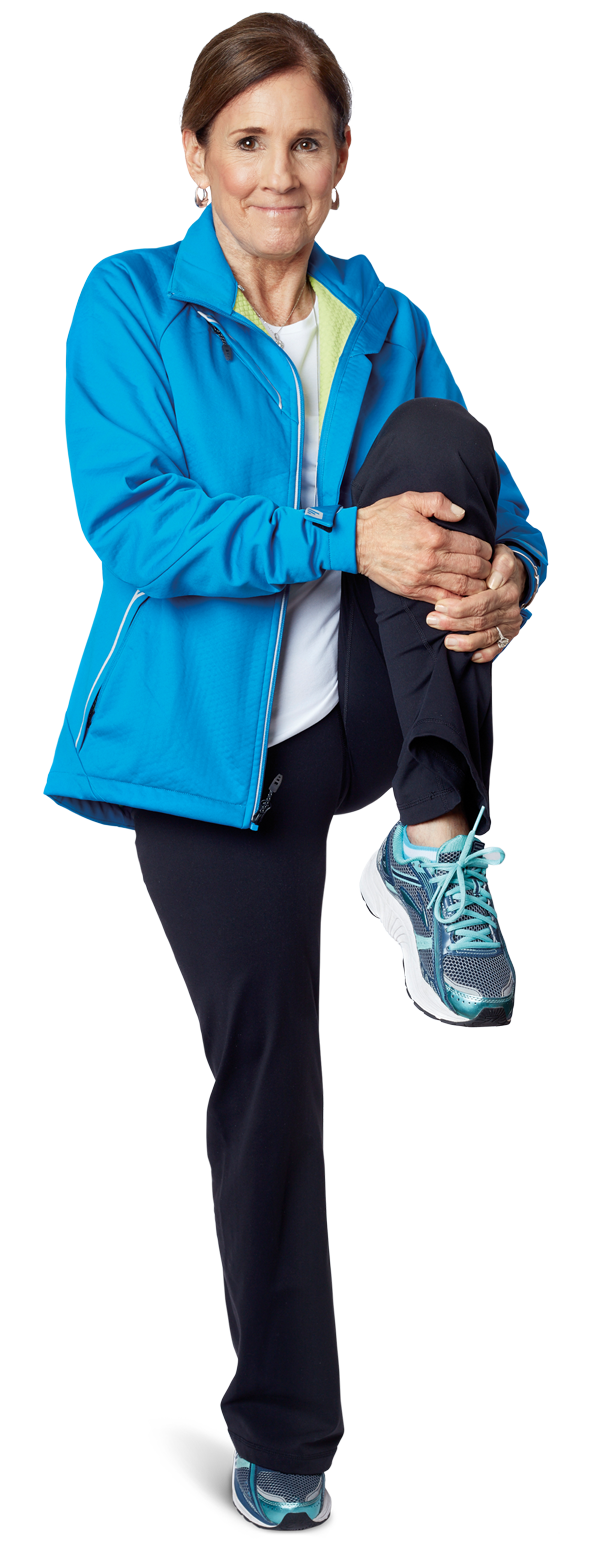
“All of a sudden, I was on the ground and there was glass all over the place and the noise was so loud. And then I looked down and I saw that my leg was all opened up,” she said in a television interview. Beth suffered a compound fracture of her left tibia and a shattered kneecap.
Fortunately, on a day of fear and tragedy, Dr. Scott Ryan, Chief of Orthopaedic Trauma at Tufts Medical Center, was on hand with colleagues to operate on Beth immediately.
Key to Beth’s treatment was the Hoffmann II MRI, an external frame that held her leg in place. Made of lightweight carbon-based materials, the Hoffmann frame was designed to provide patient comfort and facilitate fracture management and stabilization.
In addition to being cleared for MRI use under prescribed conditions, the frame employs “snap-fit” technology, so postoperative corrections and treatments for soft-tissue damage can be made with the frame in place. Clinicians can also build the frame to treat fractures close to a joint or stay clear of damaged soft-tissue areas.
Since that eventful day, Beth has had three surgeries in Boston and Chicago, including a knee reconstruction. After months of physical therapy and a great deal of determination, Beth is back on her feet, increasingly gaining flexibility and, as she says, “embracing this journey with dignity and without bitterness.”
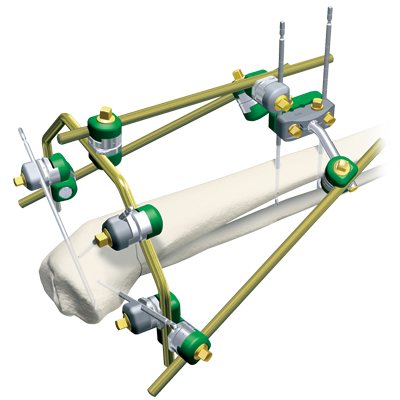
Innovation is the life blood of Stryker, and the Global R&D Awards celebrate and nurture this innovative spirit by recognizing colleagues whose perseverance, collaboration and creativity have resulted in products and processes that have made a difference for millions of caregivers and patients worldwide.
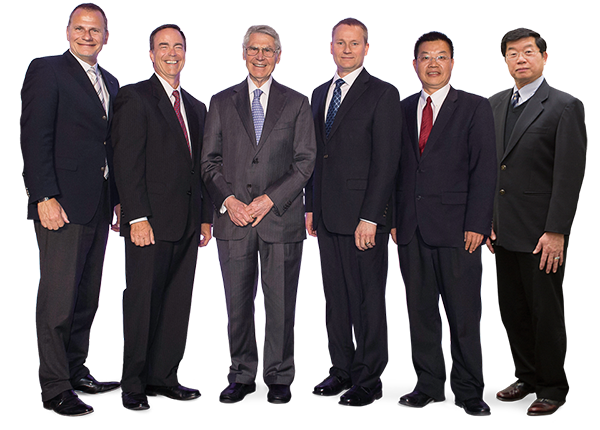
The Stryker R&D Fellows pictured with John W. Brown, Chairman Emeritus and Former Chairman, President and Chief Executive Officer (from left to right): Bernd Robioneck, Ph.D., Jim Evans, John W. Brown, Jerry Culp, Aiguo Wang and William Chang.
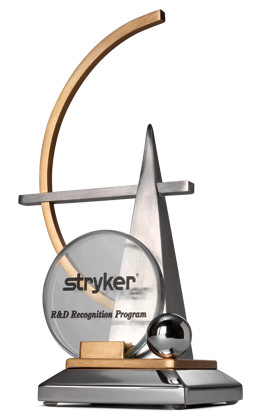
In 2015, the company introduced a new program, the Stryker R&D Fellows Award, honoring five individuals for their long-term performance and significant accomplishments in research and development. These fellows are:
Bernd Robioneck, Ph.D., based in Kiel, Germany, who has advanced the standard of care for orthopaedic patients around the world in his 27 years at Stryker, influencing product portfolios in Oncology, Spine, Craniomaxillofacial, Reconstructive and Trauma & Extremities.
Jim Evans, with three decades at Stryker, who laid the foundation for what are today’s most successful product development enterprises at two of our largest divisions, including such groundbreaking products as the Triathlon Knee System.
Jerry Culp, with 24 years at Stryker, who has invented significant breakthrough technologies that are considered the industry’s gold standard in their categories — from power tools to new-generation technology for robotics.
Aiguo Wang, Ph.D., the General Manager of Trauson, who received the Gold Medal Award as “Star Entrepreneur” from the Mayor of Changzhou in 2013 and 2014. A 24-year Stryker veteran, he holds more than 30 U.S. and international patents.
William Chang, a 34-year Stryker veteran with 12 U.S. patents, who invented the first 3 Chip CCD medical camera and has inspired more than a dozen other best-in-class models that have revolutionized medical endoscopic video.
Stryker established the Transatlantic Operating Model (TOM) when the company’s businesses in Europe and the United States merged into direct-line-reporting divisions early in 2015. Since then, the company’s Divisional European Leaders have been overseeing the sales, marketing and educational activities of the new transatlantic divisions, and the European Country Managing Directors, now centered in the European Regional Headquarters, are focused on promoting growth through increased collaboration and shared best practices.
In part because of the new organizational structure, sales in Europe grew over six percent in 2015, with strong increases in each country, and we are receiving positive customer feedback and improved employee engagement.
TOM’s initial focus in Europe included the larger European countries — U.K., Germany, France, Iberica and Italy. Based on the positive results and potential for continued growth, the European Leadership Team is bringing additional countries in Europe into TOM. Effective January 1, 2016, Switzerland, Austria, Poland, Belgium and the Netherlands joined the “EU 5” under TOM and will align with TOM processes and governance. Canada is also becoming part of the model on the North American side.
sales growth in Europe


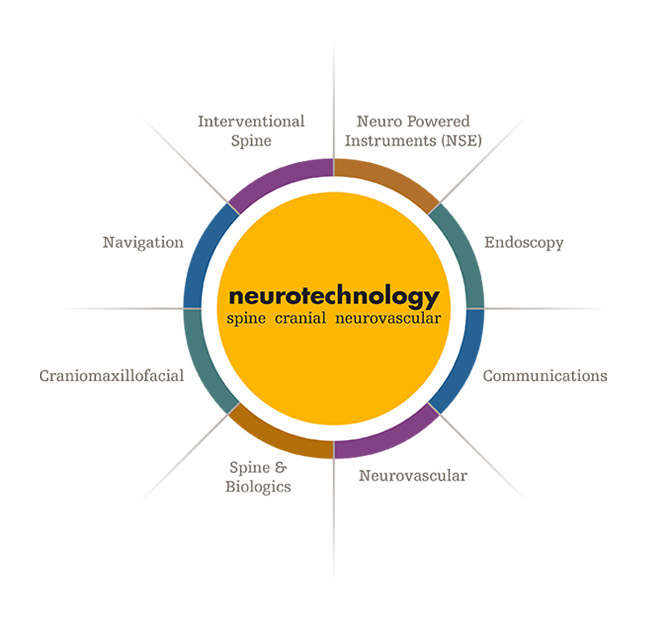
Our newly organized neurotechnology portfolio is a unique collaboration between eight Stryker businesses that is designed to strengthen the company’s leadership in the neuro community by organizing product offerings into three main categories: spine, cranial and neurovascular.
By bringing together Communications, Craniomaxillofacial (CMF), Endoscopy, Navigation, Neurovascular, Neuro Powered Instruments (NSE), Interventional Spine (IVS) and Spine, the company can showcase its depth of products and specialized services in a way that better aligns with neuro customers and their specialty practices.
This neurotechnology initiative was launched in two phases — first, an internal rollout to clarify what it would mean to customers, competitors and our reputation as a “neuro company.” Phase II launched the initiative externally at the annual meeting of the Congress of Neurological Surgeons in September 2015, including a new dedicated website, www.stryker.com/neurotechnology.
The group also provided live, cross-divisional training focused on the customer experience and customer engagement strategy, as well as a communication campaign that ranged from conference center advertising, social media and collateral to medical education events. This significant investment and collective effort is expected to strengthen our leadership position in the neuro community. The next neurotechnology event will take place at the annual meeting of the American Association of Neurological Surgeons, in April 2016.
Our new — and first-of-its-kind — innovation centre in Cork, Ireland will focus on the development of new technologies and products that improve patient safety and outcomes during surgery, and increase operating room efficiency across multiple surgical specialties, including neuro; spine; ear, nose and throat; and orthopaedics.
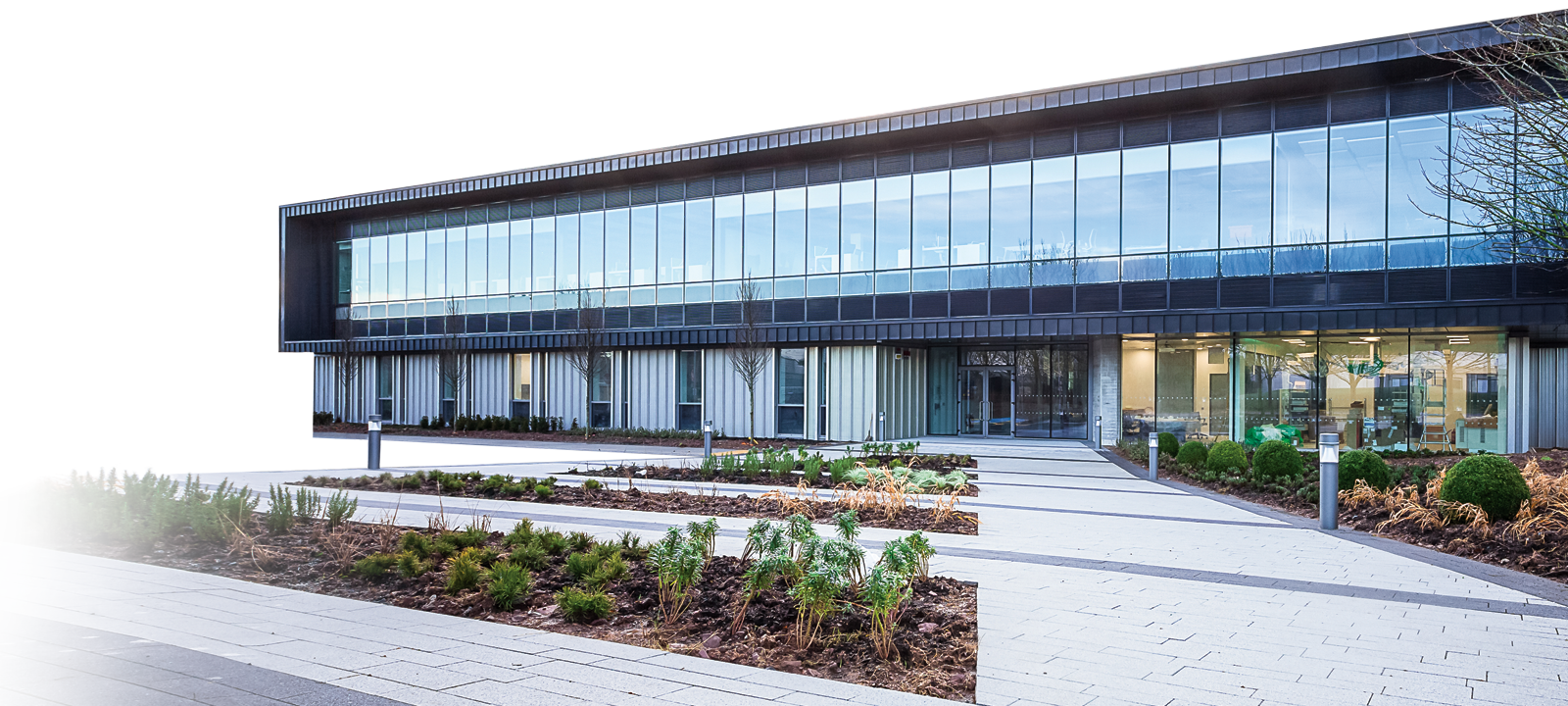
The centre, which features state-of-the-art prototyping, test facilities and a simulated operating room, has been constructed around human-centered design principles, employee well-being and a highly efficient and sustainable building design. Perhaps most important, R&D teams and surgeons will be able to collaborate globally in the development and evaluation of new surgical approaches, product concepts and complete procedural solutions in the simulated surgical environment.
Our R&D infrastructure in Ireland is supported by long-standing and strong partnerships with Irish universities and medical schools. The centre’s launch also coincides with our expanding global growth and the new Transatlantic Operating Model with its focus on stronger engagement with European customers.
We established a presence in Ireland in 1998 and have since built a significant research and development competency and manufacturing capability there through a combination of innovative technology investments and strategic acquisitions.
Every child deserves access to safe, effective and timely surgical care and a future filled with hope. Since 1982, Operation Smile has provided over 240,000 free surgical procedures for children with cleft lips and cleft palates. As one of our charitable programs, we have provided Operation Smile with more than $1.1 million in product and financial contributions to carry out its mission.
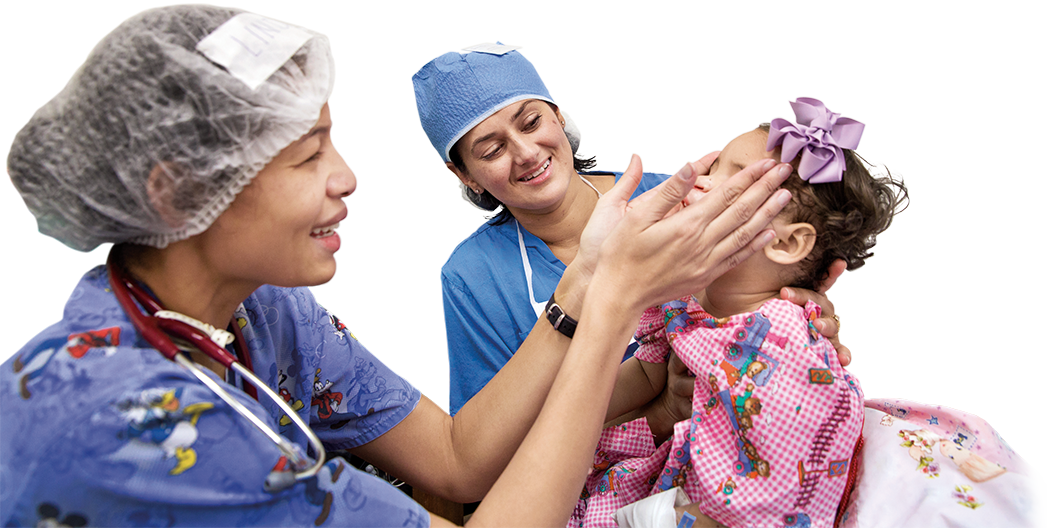

We support Operation Smile’s Resident Leadership Program, through which more than 235 medical residents have had the opportunity to learn about and participate in Operation Smile’s life-changing work. Participants have hailed from Argentina, Brazil, Canada, Colombia, Cyprus, Ecuador, Ghana, India, Israel, Jordan, Mexico, Nigeria, Peru, the Philippines, Russia, South Africa, Spain, Thailand, the U.K. and the U.S.
Over the years, we have also sponsored employees as non-medical mission volunteers. In 2015, we expanded this volunteer opportunity, sending a group of employees to join the Operation Smile team in Bolivia. The group, selected through a global application process, represented various geographies, businesses and roles within our company.
These volunteers played an integral role, supporting families as they navigated through the different stages of the mission — from registration to comprehensive medical evaluations to the day of surgery. The Bolivia mission provided 115 patients with new smiles and gave their families hope for a brighter future. While the effect on the families is immediate and life-changing, our volunteer team also left with a profound appreciation of Operation Smile’s importance and a deeper commitment to our company’s mission of making healthcare better.
In support of the Bolivia mission, we championed the Stryker Smiles campaign, a fundraiser through which the company matched employee donations dollar-for-dollar. In total, the campaign raised funding for more than 160 surgeries.

In 2015, Project 1000, a series of 13 educational events coordinated by our Trauma team in Japan, provided medical education to more than 1,000 surgeons on the different indications of IM nails or rods (Gamma3 and T2 nails), which are used to treat fractures of long bones through minimally invasive surgery.
The faculty included 41 key opinion leaders, who presented case studies and led discussions, giving advice to younger surgeons based on their vast experience. In total, the events attracted 1,186 attendants, and the satisfaction score exceeded 90 percent and achieved 100 percent at some events.
“In the Japanese market, young orthopaedic surgeons start their careers in trauma, so they’re looking for opportunities to learn from experienced surgeons,” says Katsuya Kuroki, National Sales Senior Director, Trauma, Stryker Japan. “I believe Project 1000, a unique educational opportunity featuring leading surgeons in the market, is a great example of making healthcare better.”
National Sales Senior Director, Trauma, Stryker Japan